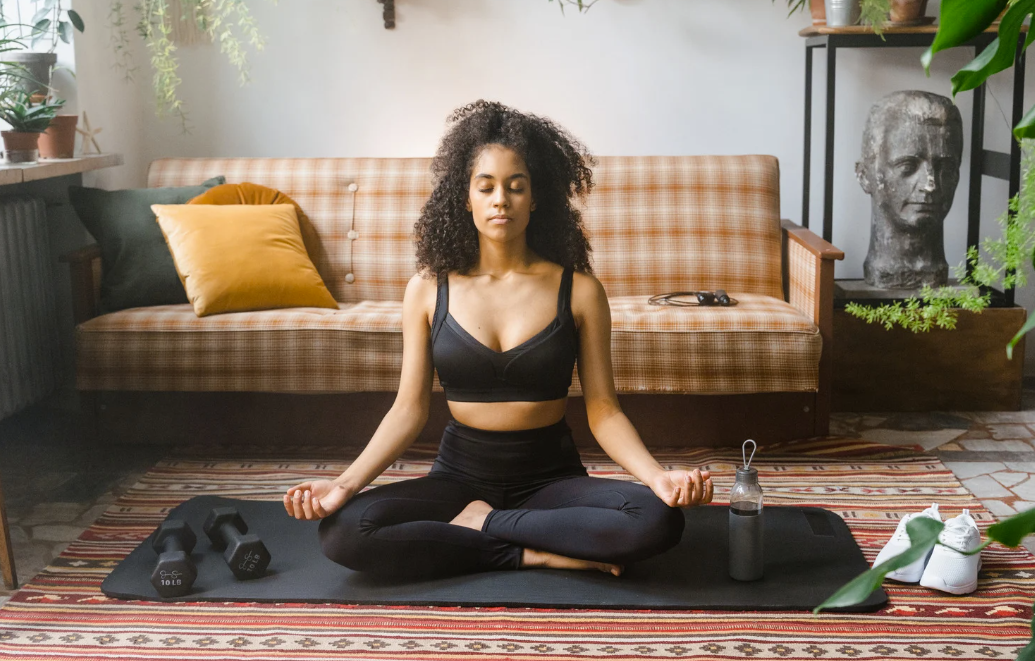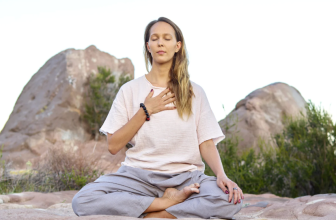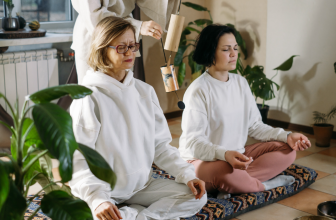
Meditation is a technique that you can use when you need to relax and to strengthen your spiritual self. It helps you to be able to be focused and to connect with the world around you. There are different benefits of doing meditation that affect your body and your mind such as getting rid of stress and even making your immune system stronger.
Even though there are different religions and spiritual ways that use meditation, this doesn’t have to be a religious thing for you at all. It was used in ancient times and cultures as a way to create peace and calmness.
Meditation can help to reduce added stress and anxiety that you have in your life, and this is good for those that are always running without taking time to stop and relax. There is no right or wrong way to do meditation and there are different types including:
• Mindfulness.
• Spiritual.
• Focused.
• Movement.
• Mantra.
• Transcendental.
• Progressive Relaxation.
• Loving Kindness.
• Visualization.
Kinds of Meditation
Not all meditation is going to be the kind of meditation that is right for you. There are different skills that people need to do these different kinds of meditation and so you need to find the one that makes you feel comfortable and makes you feel at peace. Here are the different kinds of meditation:
Mindfulness Meditation
This is a meditation that was used in Buddhist religion. It is one of the most popular types of meditation in the Western world. It helps you to notice the thoughts that you are having and to learn not to judge yourself. It also helps you to notice patterns and to learn to be compassionate with yourself.
Mindfulness meditation lets you be aware of yourself more than the world around you and as you focus on something in the room or your breathing, you will be able to concentrate on your feelings and your sensations.
This is a good meditation if you don’t have someone to guide you because it is easy to do, and you can’t really do it wrong.
Spiritual Meditation
This meditation is used in religions and in spiritual practices. It is a kind of meditation that is full of traditions. This is a meditation that lets you connect with a higher power in prayer, Sufi dhikr, and Kabbalah practices.
You can do this kind of meditation at a religious place or at home. This is a good type of meditation if you want to grow in your spiritual self.
Focused Meditation
You do this kind of meditation by focusing and using the different senses while you allow things outside to help you to pay attention. Some examples of this include:
- Using mala beads to count.
- Playing the sound of a gong in the background.
- Concentrating on the flame of a candle.
- Counting the in and out breaths.
- Looking at the moon.
This is a simple practice, and it can be hard for people that are just starting meditation to do. It is hard because it lasts a long time and if your mind is always wondering, you have to learn how to refocus.
Movement Meditation
Movement meditation is when you move in ways such as:
- Going for a walk.
- Tai chi.
- Small movements.
- Qi gong.
- Working in the garden.
This kind of meditation is active, and it means that you move as you connect with your body and as you develop your body to get stronger.
Mantra Meditation
The Hindu and Buddhist traditions often use mantra meditation. It is when you use sounds such as “om” and repeat it over and over again. You can say it out loud or in your mind and you can chant for a specific amount of time while you tune into the world around you. This allows you to be more aware of yourself and where you are.
This is one of the most enjoyed meditations because they don’t have to be quiet, and they can speak and concentrate on the words that they are saying. This is good if you don’t want to have to be silent.
Transcendental Meditation
TM is a type of meditation that is studied in science. It was created by Maharishi Mahesh Yogi and is a time when you need to stay calm and peaceful. You can do this by being quiet and keeping your mind calm. You can use mantras while you are meditating.
If you want to go deeper in your meditation and understand it more, this is the kind of meditation that you might want to try.
Progressive Relaxation Meditation
Progressive relaxation meditation is also known as body scan meditation because it helps you to get rid of tension in your body. This is a kind of meditation that has you to tighten your muscles and relax muscles all at the same time.
This meditation will get rid of tension in your body and is a good meditation to use before you go to bed so that you can sleep better.
Loving Kindness Meditation
When you need to be compassionate and kind, this meditation can help you with that. It can help you to get love from others and to be able to give love to others. It also can help you if you have a hard time being kind and loving to yourself.
This meditation is called loving kindness because it promotes these feelings and letting go of anger or unforgiveness that you have for others.
Visualization Meditation
Calmness and relaxation are important in meditation and visualization meditation can help you to have these feelings. It can also allow you to imagine different images and scenes that can make you relax and make you feel good.
This kind of meditation allows you to use your senses to add detail to the things that you are thinking about in your mind and then to take on the qualities of that situation. This kind of meditation can also help you to imagine reaching our goals and help you to feel more motivated.
People will use this kind of meditation when they are in a poor mood or when they need to get rid of stress and anxiety.
How to Meditate
The best way to start meditating is to sit in a comfortable place that is quiet and pay attention to how you are breathing. You don’t have to start long when you begin but some believe that you should do this for 20 minutes a day. If you can’t do that, try smaller and start with as many minutes as you are comfortable with and then add minutes each day.
Sitting for a few minutes each days and doing it for a 100 days can increase your senses and help you to relax and be calm.
Why is Meditation Helpful?
There are different ways that meditation can help you. It can help you in your mind, body, and spirit. Here are some benefits of meditation:
- Helps you to sleep better.
- Lowers the blood pressure.
- Gets rid of stress and anxiety.
- Improves your emotions.
- Helps you to focus.
- Increases mood.
- Lowers aggression.
- Helps you to adapt.
- Increases the health in your aging.
- Lets you have more empathy for yourself and others.
Meditation can be a way to get rid of problems in your life, but you should never replace meditation with going to a doctor. Even if this lowers your blood pressure, that doesn’t mean stopping taking any of your medication.
Doing these techniques can help you to improve your behaviors and your emotions and can reduce stress, helping you to cope with things in your life. Here are other things that meditation can do for you:
- Decrease depression.
- Decrease anxiety disorders.
- Lower cardiovascular disease.
- Reduce dementia.
- Reduce Alzheimer’s disease.
- Reduce symptoms of Parkinson’s disease.
- Decrease insomnia.
- Help with ADHD.
- Help with chronic pain.
Meditation has been proven to bring positivity to the lives of people. It can help with depression and help people to be less negative. This can decrease anxiety disorders and other things.
Meditation can also reduce cognitive stress and increase the quality of your life and how the blood flows through your body, including your brain. Some studies have shown that meditation can also ease chronic pain.
Final Thoughts
Rather if you want to get rid of stress, learn to relax or follow some kind of religious practice, meditation can help you. This practice can help you to stay calm and help you to live a better life.
Don’t be afraid of trying meditation even if it is something new for you. No meditation is the right or wrong meditation, and you need to choose the kind that makes you feel at peace. This should be something that you enjoy and that you embrace.
Try out the different forms of meditation and see what kind sticks out to you in your mind. If one isn’t comfortable for you, try a different one.






‘Visualization Meditation’ intrigues me due to its potential to merge creativity with relaxation. This technique may foster a unique blend of mental clarity and emotional release that warrants further exploration within therapeutic settings.
The exploration of different meditation techniques illustrates the multifaceted nature of this practice. Each method serves distinct purposes and may resonate differently with individuals, suggesting a personalized approach is essential for effective implementation.
I appreciate the article’s emphasis on the historical context of meditation. Acknowledging its roots in various cultures enriches our understanding and invites a more profound respect for its diverse applications in contemporary life.
Furthermore, recognizing the evolution of meditation through various traditions enhances its credibility as a holistic wellness tool. This perspective encourages practitioners to engage with it more authentically.
Indeed, understanding the historical significance of meditation allows for a more nuanced approach to its practice. It becomes clear that these techniques are not merely modern trends but have deep cultural and spiritual foundations.
Ultimately, this article highlights the versatility of meditation as a tool for enhancing well-being across various dimensions—physical, emotional, and spiritual—which prompts reflection on how we can integrate these practices into daily routines effectively.
‘Transcendental Meditation’ has garnered considerable scientific interest. It would be fascinating to see more interdisciplinary research examining its neurological effects and how they might differ from other forms of meditation.
‘Loving Kindness Meditation’ provides an important counterbalance to self-criticism prevalent in modern life. Engaging in such practices could cultivate greater empathy and compassion within societal frameworks that often prioritize individualism.
‘Mindfulness’ stands out as particularly relevant in today’s fast-paced society. Its practical application could serve as a pivotal strategy for individuals seeking mental resilience amidst increasing stressors.
The article succinctly categorizes different meditation types, providing clarity to newcomers. However, further empirical studies could enhance our understanding of how these methods influence cognitive processes over time.